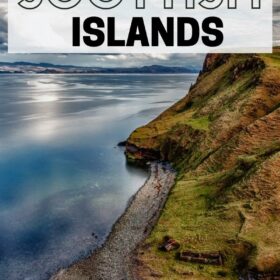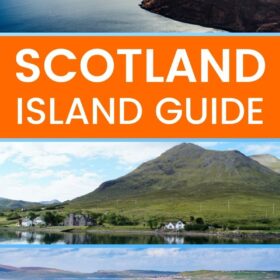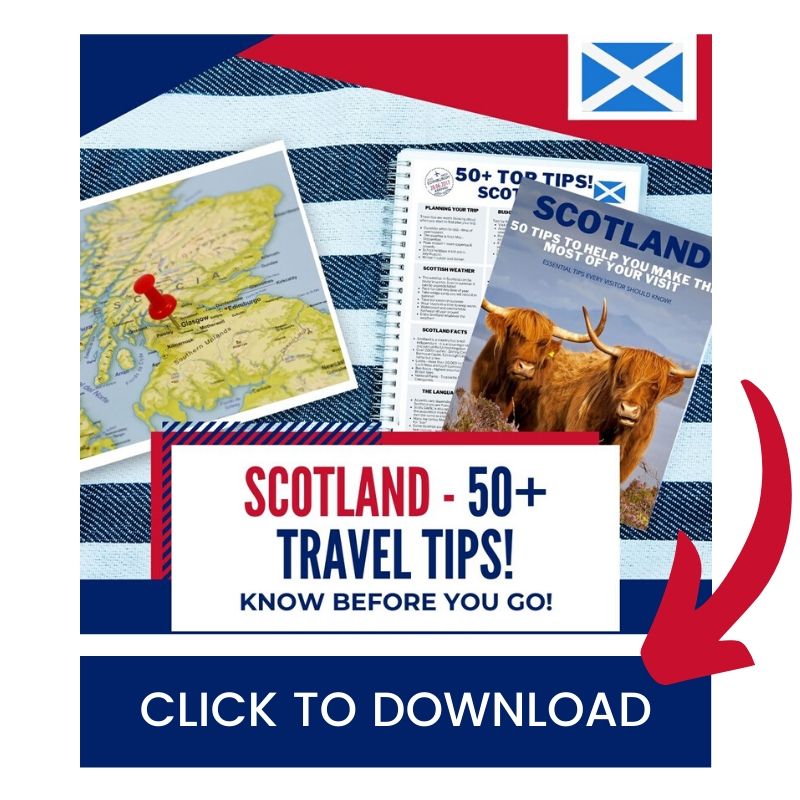Discover the beautiful islands of Scotland in our complete guide and decide which to include in your Scotland itinerary with our practical tips and information.
Your suitcases are open and ready to be packed, you’ve got all the time off you need and now you’re ready to plan that trip of a lifetime. The question is…where do you want to go?
The possibilities seem endless. Does strolling along a white sandy beach with turquoise water lapping at your toes sound pretty good? Of course, it does.
What about lacing up those hiking boots and powering your way up a mountain or two? Amazing!
You could also visit a remote region with a rich cultural heritage and then take a deep dive into thousands of years of their history.
Wouldn’t it be great if there was a destination where all three of those travel dreams could become a reality?
There is!
Pack your bags and visit Scotland for an island-hopping getaway.
Do you dream of visiting the Scottish islands? Unsure of planning your visit independently? Why not take a tour and have the logistics sorted for you? We recommend Rabbie’s award-winning tours including this 17-day island hopping extravaganza which includes Skye, Iona, Orkney & the Outer Hebrides or this 3 day Orkney Explorer tour.
⭐️ Click here for more great tours of Scotland from Rabbie’s
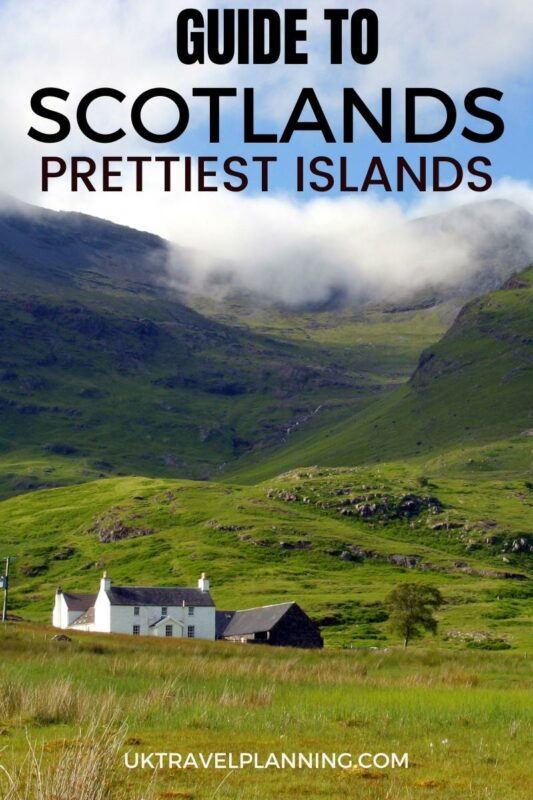
How to choose the best Scottish islands for your trip
When people think about visiting Scotland, they tend to forget about its islands — 94 are inhabited and 24, in particular, offer a range of sights and activities that will satisfy anyone’s wildest vacation aspirations.
Each has its own character. Most have a wide variety of wildlife and some can boast the best bird watching the world has to offer.
If you like gorgeous scenery, rugged coastlines, moody moors and tranquil beaches, then you won’t do much better. Add in a little whisky sampling, storytelling, epicurean delights and archaeological intrigue to the mix as well.
Whether you have a week or a month, deciding to spend your holidays on the Scottish islands is an easy choice to make. The complication is deciding which islands to visit.
Take the time to consider each group of islands, what they have to offer and which ones will be the right fit for you and your family’s ultimate Scottish adventure.
🚙 Considering a road trip around Scotland? Not sure if you’re up to driving in the UK? We recommend using a Tripiamo guide to get yourself familiar before your journey. Previous UK Travel Planning users have said this has made them feel much more comfortable getting behind the wheel. Find out more in our guide to renting a car in the UK.
Introduction to the Scottish Island Groups
Islands of the Clyde
On the western coast of Scotland, in the Firth of Clyde, there is a small island group called the Islands of Clyde.
Though there are 40 islands, only four are populated and of those, Bute and Arran are the best known. They may not be as famous as other islands of Scotland but don’t count them out — they’re easy to reach and just as charming.
Arran is often called “Scotland in miniature” and has a little bit of everything Scottish including its own highlands and lowlands.
Bute is smaller and fun to explore, offering dramatic coasts, history and a variety of wildlife.
For those with limited time, the Islands of the Clyde may prove to be your best bet.
Shetland Islands
You’ll find the Shetland Islands between Scotland and Norway.
There are over 100 islands but only 15 are inhabited, with Mainland, Yell, Unst and Fair Isle being the most well-known. They all share dramatic scenery, like awe-inspiring jagged cliffs and cosy sheltered beaches.
The wildlife varies from seabirds to seals and of course, those famous Shetland ponies.
The culture and history go back thousands of years — the Shetlands were a favourite destination for Viking invasions. It may be a trek to get there but one that is well worth the effort.
Orkney Islands
If you’re looking to travel to islands off the north coast of Scotland, you won’t go wrong visiting the very popular Orkney Islands.
There are 70 islands, some uninhabited while others have a sparse population. Mainland and Hoy are most popular to visit but so are the Northern Orkney Isles if you’re after some peace and quiet.
No matter where you go, you’ll find dramatic sea cliffs atop churning seawater and ancient archaeological sites like standing stone circles that are older than Stonehenge.
Don’t forget the sea stacks — those gravity-defying geological formations that rise, Jenga-like, out of the sea.
The Inner Hebrides
The Inner Hebrides are an incredibly popular collection of islands off the Scottish coast and some of the best Scottish islands for wildlife. Some are impossibly beautiful while others are rugged and sparsely populated.
Whether you’re after magical landscapes, varied wildlife or turbulent history, you won’t run out of things to do.
Explore castles, scale mountains, hike along the coast and discover some of the best bird watching in the world.
Don’t forget about the scotch — some of the world’s best are crafted in the Inner Hebrides.
You could spend days island hopping within the Inner Hebrides and never do the same thing twice!
The Outer Hebrides
Looking for beautiful Scottish Islands? Off the northwest coast of Scotland, beyond the Inner Hebrides, you’ll find the Outer Hebrides.
There are 119 islands in total but only five are inhabited, including Lewis, Harris, North and South Uist and Barra.
They are full of surprises. Who would expect sugary white sand beaches with turquoise water? Cliffs, heather-covered moors, not to mention a rich Gaelic culture.
Whether you’re looking for an active, outdoor vacation or a tranquil place to kick back, the Outer Hebrides has something for everyone.
Islands of the Clyde
Arran
Of all Scotland’s islands, the Isle of Arran is almost like a miniature version of Scotland. Dramatic windswept glens, castles, mountains, cultural heritage with some golf thrown in for good measure.
It’s hard to do everything in a single visit but start with Lochranza Castle — its creepy underground prison is a must-do. Steady your nerves at the Arran Distillery and then seek out other local favourites like traditional oatcakes or Arran’s artisan cheese.
If the great outdoors is your passion, take a stroll along the coast — you may spot a soaring golden eagle or a seal playing near the shoreline.
If you’re really motivated, climb all 2,866 feet of Goatfell, the tallest mountain in Arran.
Ideal for
Logistics
How to get there: There’s a ferry across the Firth of Clyde from Ardrossan.
How to get around: By car, bus or bicycle.
How long to stay: You could easily spend a few days exploring Arran.
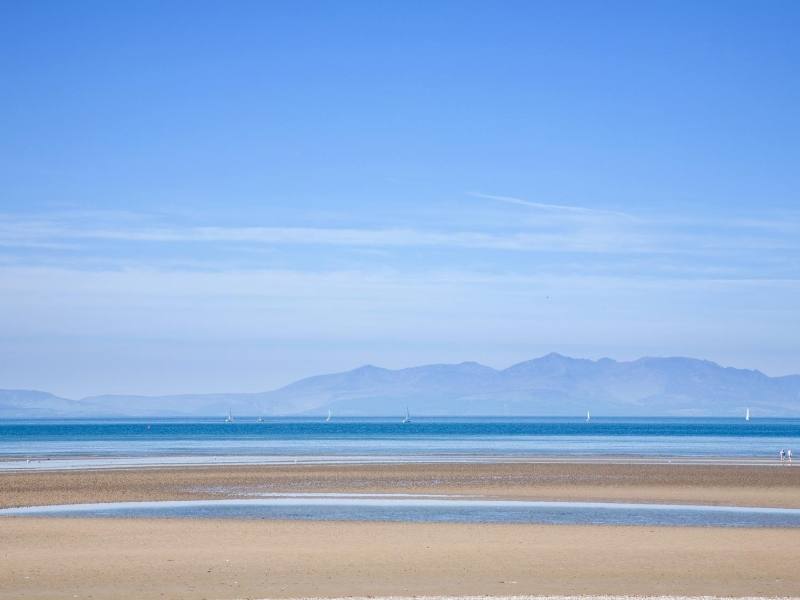
Bute
Bute is the smaller of the two Islands of Clyde. You’ll disembark from the ferry in the charming port town of Rothesay. Its Victorian promenade features ice cream shops and old-school pubs as well as stylish boutiques and esoteric bookshops.
Find The Discovery Centre — it has a wealth of information and history about Bute. For architecture buffs, Mount Stuart is a Gothic-style mansion with impressive grounds.
Outside of the town, craggy moors and windy glens will be a hiker’s delight. On the southern part of the island, the ruins of St. Blane’s Chapel and its creepy graveyard are just waiting to be explored. Don’t forget to look up, you’ll be treated to stunning views of Arran.
Ideal for
Logistics
How to get there: From Wemyss Bay, Bute is a short ferry ride across the Firth of Clyde.
How to get around: By car, bus or bicycle.
How long to stay: Plan to spend a day or two.
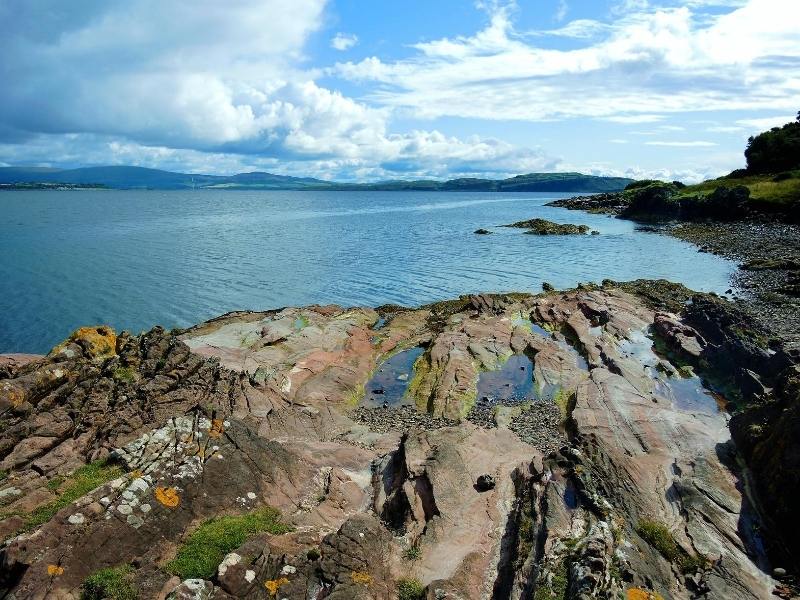
Shetland
Mainland
Mainland is the largest island in the Shetlands. Lerwick, Mainland’s busy fishing port, has a population of 7,500 and offers many big-city amenities like restaurants, bars and clubs.
Walk along its historic waterfront and then visit the Shetland Museum for a dose of local history, mythology, geology and culture.
On the island’s southern end, you’ll find Sumburgh Head Lighthouse, Visitor Centre and Nature Reserve. Tour the lighthouse or just marvel at the view.
In the north, the volcanic cliffs of Eshaness are dark and mysterious and one of the most dramatic sights on the island.
Ideal for
Logistics
How to get there: Nightly ferries leave from Aberdeen. There are also flights from Aberdeen, Glasgow, Inverness, Edinburgh or Kirkwall.
How to get around: Car, rental car or limited bus service.
How long to stay: If you use Mainland as a base to explore other islands, you could easily spend several days there.
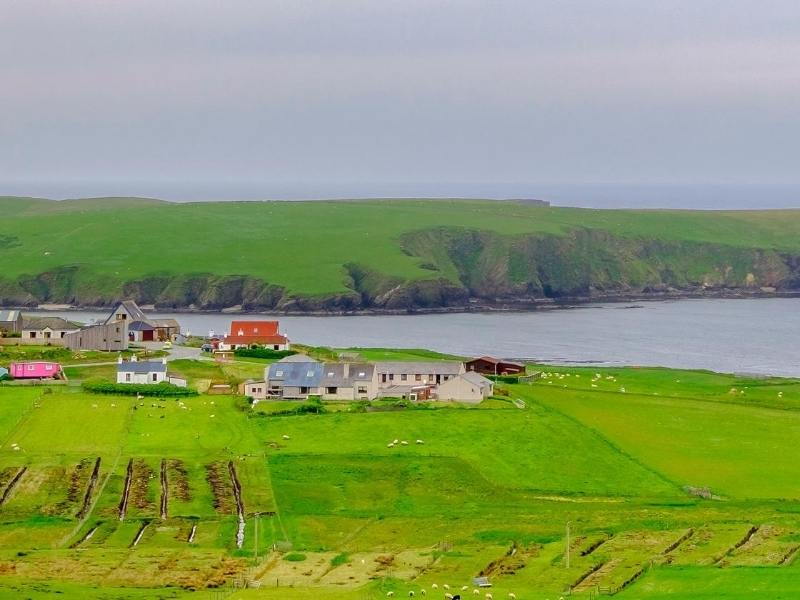
Yell
At 82 square miles, Yell is the largest of the Northern Isles and has a population of just under 1,000. Its coasts are alive with seabirds, otters and seals.
If you’re lucky, you’ll be greeted by Shetland ponies at the pier. Make time for the Old Haa Museum. It has island artifacts, local whaling history, a tearoom and a gift shop.
Then, seek out the White Wife of Queyon, a ghostly figurehead from the ship Bauhaus, lost in 1942. Also, if you’re brave, Windhouse is a ruined 18th-century manor home that is considered to be the most haunted house in Shetland.
Ideal for
Logistics
How to get there: There’s a car ferry from Mainland.
How to get around: Car and limited bus service.
How long to stay: A day trip to Yell is ideal.
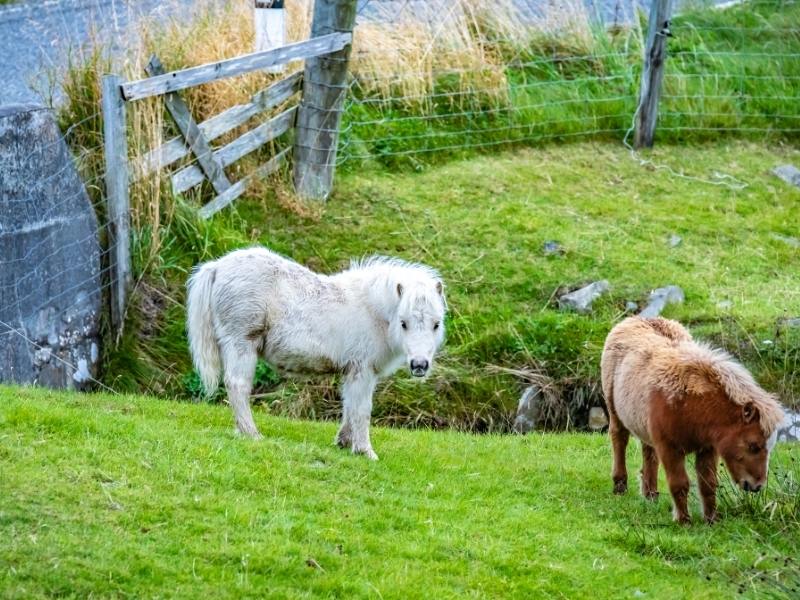
Unst
Looking for jagged cliffs, a rocky shoreline and Shetland ponies? Then it’s time to visit Unst, the UK’s northernmost inhabited island.
Only 12 miles long and 5 miles wide, you’ll probably see those world famous Shetland ponies munching grass by the roadside.
Unst has walking paths that snake through its sprawling grasslands, moors, peat bogs and along the shore.
At the Hermaness National Nature Reserve at the northwestern tip of the island, you can see a variety of seabirds, arctic alpine plants and unique blooms.
Visitors shouldn’t miss the Shetland’s only museum, Unst Boat Haven. Learn about the island’s history and the fisherman who have called it home for generations.
Ideal for
Logistics
How to get there: From Mainland Shetland, you’ll need to take two ferries.
How to get around: Car, bicycle (rentals available) and limited bus service.
How long to stay: You can do a day trip but spending the night will leave you less rushed.
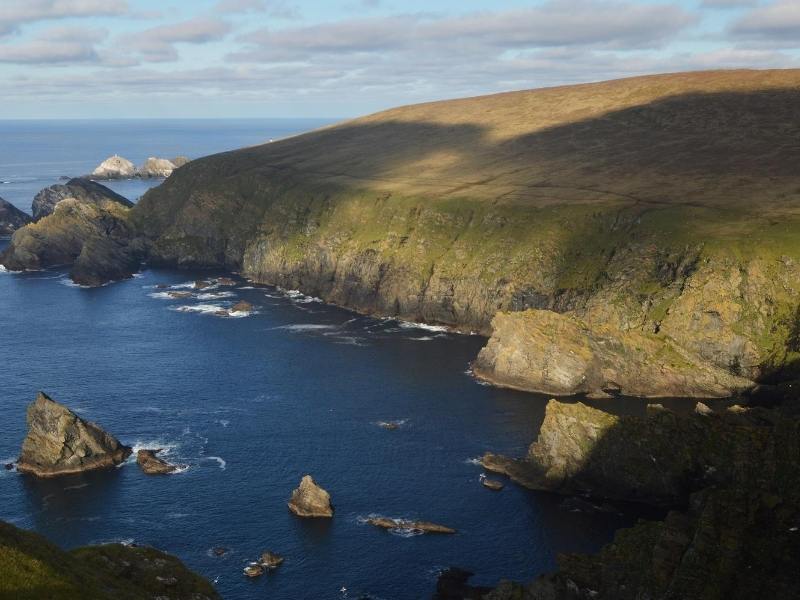
Fair Isle
Tiny Fair Isle is the most remote inhabited island in the UK. It’s only 3 miles long and 1 ½ mile wide and sits between the Orkney and Shetland Islands.
It’s breathtakingly beautiful, like a verdant green jewel peppered by a few simple white cottages. There are 70 inhabitants, many of whom make their living producing traditional hand-knitted sweaters.
Fair Isle is a bird-watching paradise. Its jagged shore and steep cliffs provide excellent habitat for some of the most elusive seabirds on earth.
The Fair Isle Bird Observatory is a must-visit — even non-birdwatchers will be amazed by their fascinating scientific work.
Ideal for
Logistics
How to get there: There is a 12-passenger ferry from the Shetlands southern tip. There is also an 8-seater plane that leaves from Tingwall Airport but flights are often rescheduled for the weather.
How to get around: Bicycle or walking.
How long to stay: Given that it’s one of the most difficult islands in Scotland to get to, plan to spend at least a few days.

Orkney
Mainland
Mainland is the largest of the Orkney Islands and makes a great base for exploring the other islands.
Kirkwall, its main city, has been a trading centre since the 11th century. Today, it has theatres, restaurants and a choice of accommodations. St. Magnus Cathedral is there as are shops with local crafts, jewellery and clothing.
For a wee dram, visit Highland Park, the northernmost distillery in the UK. In 1999, Mainland was designated a UNESCO World Heritage Site because of its archaeological treasures like the ancient Ring of Brodgar, a 5000-year-old stone circle and Skara Brae, the ruins of a stone age settlement.
READ MORE – Things to do on Orkney
Ideal for
Logistics
How to get there: There are flights from Glasgow, Inverness, Aberdeen or Edinburgh. There are multiple ferries, one of which is from Aberdeen.
How to get around: Car, bus or taxi.
How long to stay: You could easily spend several days exploring Mainland. If using it as a base to explore other islands, plan on several more days.
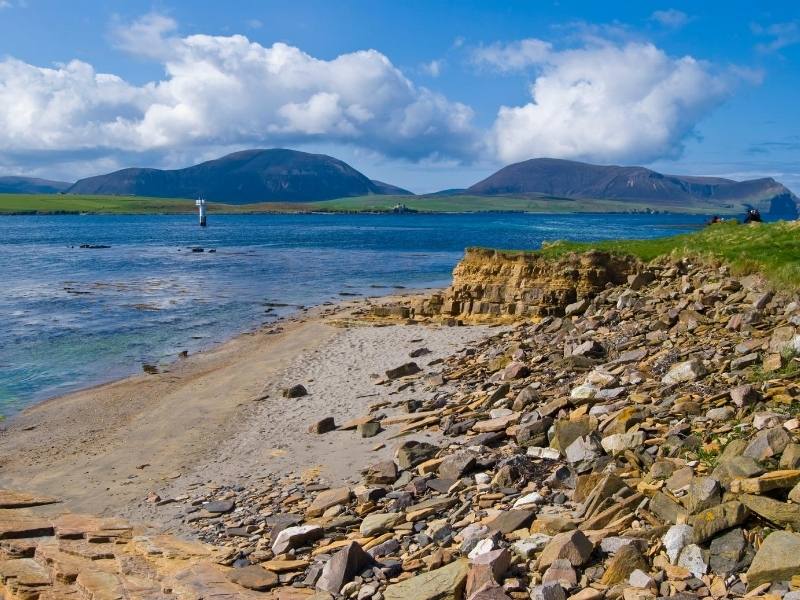
Hoy
The Vikings named Hoy “High Island” because it rises up out of the sea. Its dramatic cliffs, glacial valleys and heather-covered moors create a landscape of other-worldly beauty.
The Orkney Islands are known for sea stacks, and Hoy has the UK’s largest —The Old Man of Hoy. At 450 feet, it towers over the churning Atlantic. If you’re a walking enthusiast, take the path along Rackwick Bay to see the Old Man. It’s a five-mile, uphill journey but well worth it.
For something less strenuous, visit the RSPB nature reserve — 10,000 acres of gorgeous country and a bird nesting and migrating site.
Logistics
How to get there: There is a car ferry from Houton and a passenger ferry from Stromness.
How to get around: Car or walking.
How long to say: Hoy is perfect for a day trip.
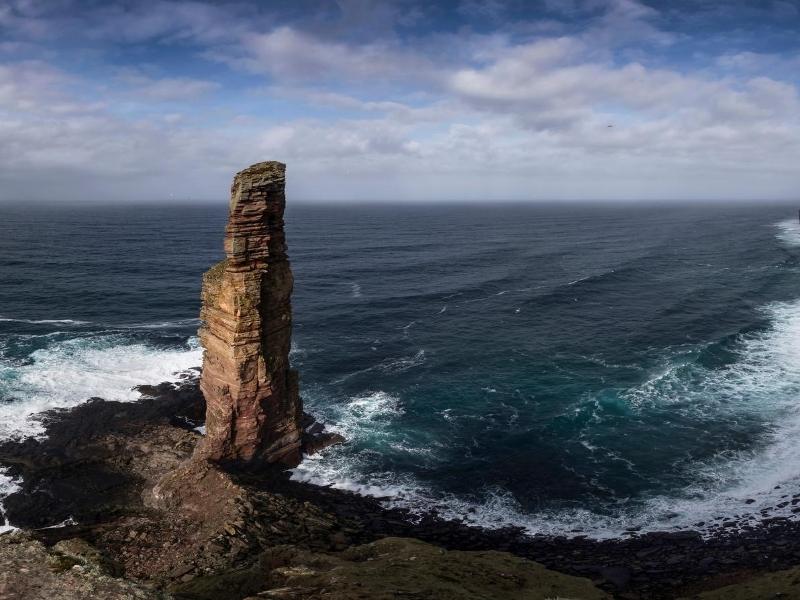
Northern Orkneys
If you’re in Kirkwall and want to explore Scotland’s undiscovered country, take a ferry to one of Orkney’s North Isles. It’s nature in its most unspoiled state. Dramatic coastlines, windswept moors and an amazing array of wildlife, there are also historical and archaeological sites.
Sanday, Eday and Stronsay are the larger islands. Westray, Papa Westray and North Ronaldsay are smaller and even more remote. All have limited, no-frills accommodations available. If you’ve ever wanted to see seaweed eating sheep, North Ronaldsay is the place for you.
Logistics
How to get there: Take a ferry from Kirkwall to any or all of these islands. You can also travel in between islands.
How to get around: Car or bicycle.
How long to stay: You could spend a few hours or a few days on each island.
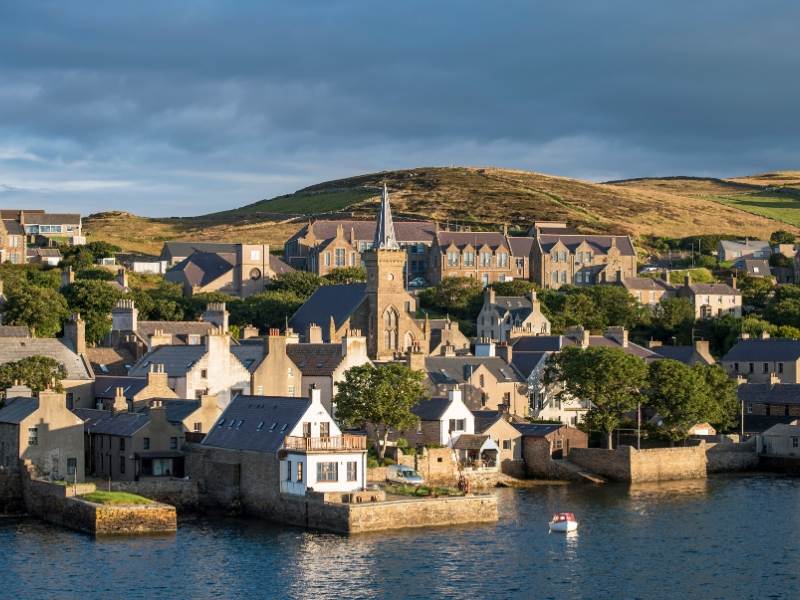
Inner Hebrides
Islay
Attention whisky aficionados — Islay is known as Scotland’s whisky coast. It’s the local peat that gives the Islay single malts their famous smoky richness. There are eight distilleries on Islay to visit, so get ready. Still, there is more to Islay than just the whisky.
It’s the southernmost island of the Inner Hebrides and one of the larger Scottish islands at 240 square miles. In Port Ellen, you’ll see the Carraig Fhada Lighthouse.
Portnahaven, a picturesque fishing village on Islay’s southwestern tip, is a great place to catch a glimpse of a seal. Toward the north, visit the Old Parish Church of Kildalton and see the Kildalton Cross — an 8th century carved Celtic cross.
Ideal for
Logistics
How to get there: There is a car and passenger ferry from Kennacraig into Port Ellen. There are also two flights a day from Glasgow.
How to get around: Car, car rental, bus and bicycle (rental available.)
How long to stay: You could easily spend several days exploring Islay.
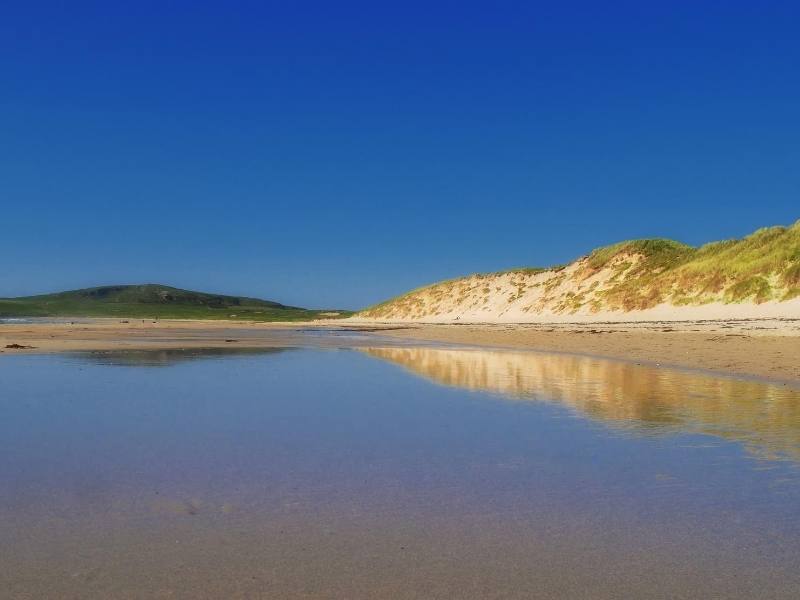
Mull
Mull is one of the best Scottish islands to visit because of its gorgeous landscapes, historical sites and diverse wildlife.
Tobermory, its largest town, makes for a picturesque scene with its colourful buildings overlooking the waterfront. It’s also home of the Tobermory Distillery, one of the oldest distilleries in Scotland.
Castle buffs should seek out Duart Castle, perched atop a cliff overlooking the Sound of Mull. It has a 13th-century keep, state room, banquet halls and hair-raising dungeons.
For the mountain climbers in your party, tackle Ben More—the only Munro (mountain over 3,000 feet) outside of the Isle of Skye. Calgary Beach is also lovely with its white-sand beaches and plenty of space for a relaxing walk next to the sea.
Ideal for
Logistics
How to get there: Ferries cross to the island at three points: Oban, Lochaline and Kilchoan.
How to get around: Car, car rental, taxi and limited bus service.
How long to stay: You should at least spend one day, maybe two.
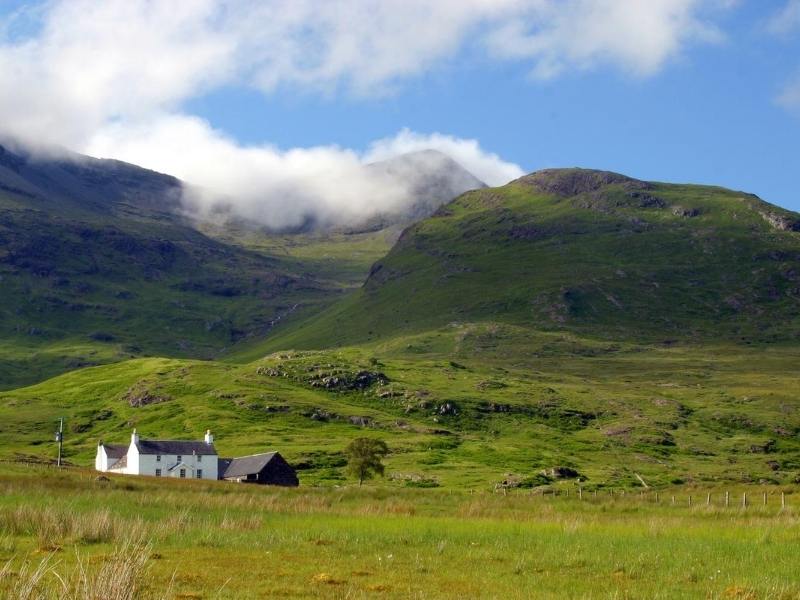
Skye
The Isle of Skye is one of the country’s most popular tourist destinations and unquestionably one of the most beautiful Scottish islands.
With breathtaking scenery and rugged landscapes, Skye has easy access to the mainland of the Scottish Highlands thanks to the Skye Bridge that spans Loch Alsh. Portree, Skye’s main village, has a harbour lined with pastel-coloured buildings, perfect for Instagram-able moments.
Don’t forget to check out the Old Man of Storr, a rocky hill that juts into the Scottish sky like a blade.
Drive along the Trotternish loop for some of the most amazing scenery you’ll ever see. If castles are your passion, you’ll need to explore the 800-year-old Dunvegan Castle and gardens. If not, then just go for a hike or a stroll, keeping an eye out for some of the island’s abundant wildlife.
Read – Isle of Skye Travel Guide & Best tours to Skye
Ideal for
Logistics
How to get there: Car via the Skye Bridge or by ferry from Mallaig.
How to get around: Car, rental car, bus or bicycle.
How long to stay: You could spend several days exploring Skye but beware—accommodations are limited so book in advance.
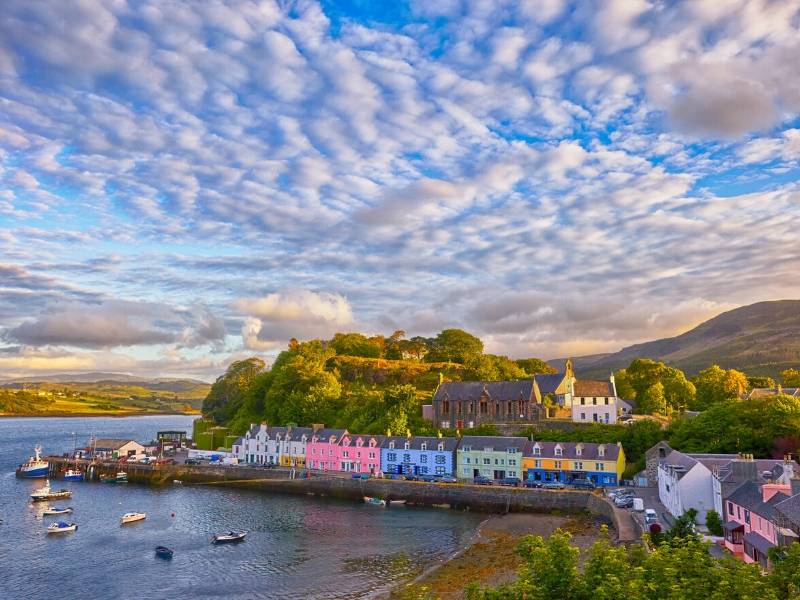
Jura
While Islay is one of the most popular islands to visit in Scotland, Jura, only minutes away by ferry, is often overlooked. Its bleak geography makes it feel more remote than it is — only 5 miles from the mainland.
The Paps of Jura, three conical-shaped mountains, dominate the landscape. If you’re a hard-core hiker, consider tackling all three peaks with the 10 hours, 10-mile trek.
For something a little more mellow, visit Craighouse on the island’s southwest corner. It’s the only village on Jura and is home to the Isle of Jura Distillery. The Craighouse Village Hall sometimes has live performances and hosts ceilidh, a traditional Scottish storytelling gathering.
Ideal for
Logistics
How to get there: Take the ferry from Kennicraig on the mainland and then a ferry from Islay.
How to get around: Car, rental car (from Islay), bicycle (rental available) and limited bus service.
How long to stay: Jura makes a lovely day trip from Islay.
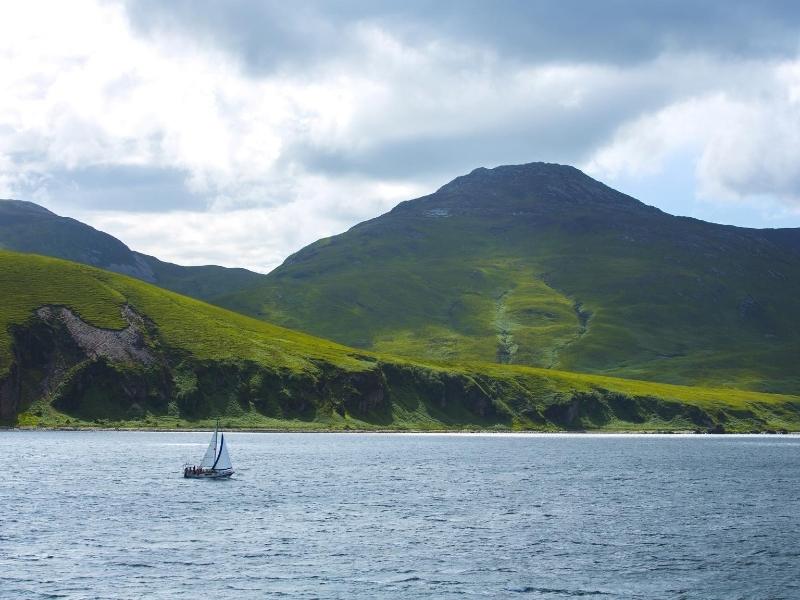
Rum
At first glance, Rum feels relatively barren. Only 30 people call it home and consequently, the goat population outnumbers the humans by 10:1. The landscape is hilly, treacherous and wet, ideal for wildlife and nature walks but more difficult for carving out a living.
Visitors should bring good hiking shoes and be prepared to walk uphill at least some of the time. They’ll be treated to breathtaking scenery and may even see a few red deer. Deer were introduced to the island when textile tycoon John Bullough purchased Rum as his hunting playground in 1888.
Today, visitors can see the outside of Kinloch Castle, a Victorian mansion built in 1900 by his son, George.
Ideal for
Logistics
How to get there: There’s a ferry from Mallaig that only runs on certain days.
How to get around: Walking or bicycling.
How long to stay: Rum is perfect for a day trip
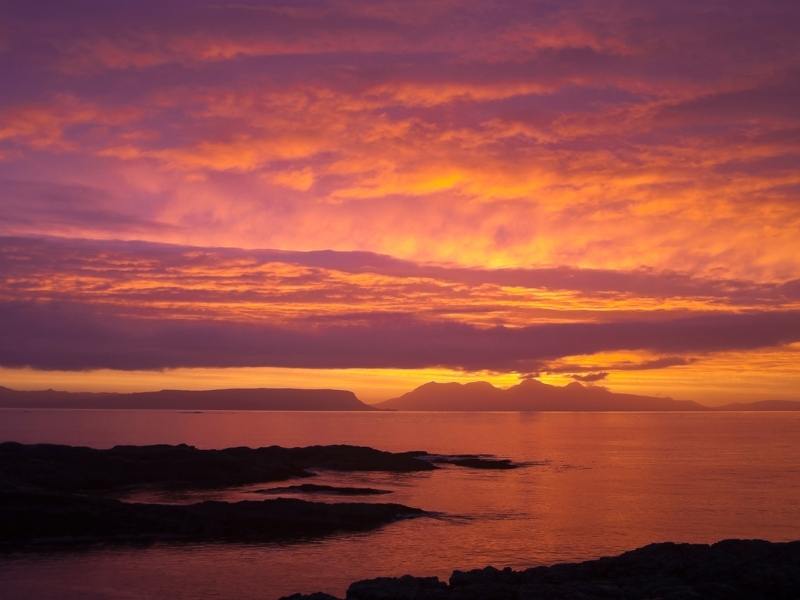
Colonsay
If you’re looking for peace and quiet, consider a jaunt to Colonsay. It’s 10 miles long and 2 miles wide and is known for having unspoiled, natural scenery.
Its craggy, heather-covered landscape is not as exposed as Coll and Tiree so it provides an ideal habitat for a wide variety of plant and animal life. If you’re lucky, you might see a wild goat or rabbit.
If it’s Wednesday or Friday, visit the Colonsay House Gardens, an 18th-century house with a 20-acre woodland garden. Their rhododendrons are some of the finest and most varied in Scotland.
Afterwards, drive to Kiloran Bay and you’ll find the island’s most beautiful beaches.
Ideal for
Logistics
How to get there: There’s a ferry from Oban and a flight from Oban once per week.
How to get around: Car, walking or bicycling.
How long to stay: Colonsay is perfect for a day trip.
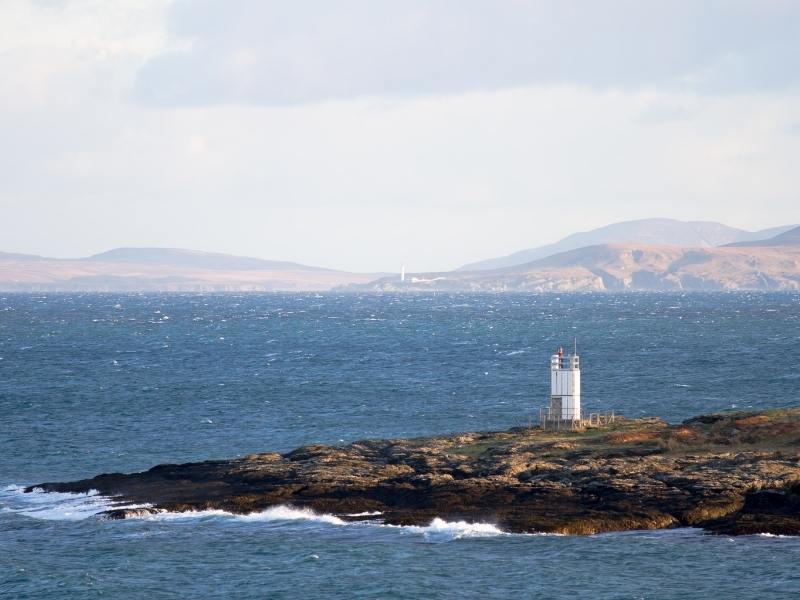
Iona
Many visitors to the tiny island of Iona report that it has a distinctly spiritual feeling, different from all other islands off of Scotland. Given that in 563, St. Columba established his monastery and made Iona the cradle of Christianity in Scotland, that holy feeling isn’t that surprising.
Iona is also incredibly beautiful. It’s small — four miles long and one-mile-wide — and has white sand beaches and fertile land, some of which is still tenet-farmed using traditional methods.
The Benedictine Abbey Church and the neighbouring Augustinian Nunnery are must-dos for any travellers.
Ideal for
Logistics
How to get there: There’s a passenger ferry that leaves from Fionnphort in Mull.
How to get around: Walking or taxi service.
How long to stay: If you’re in Mull, Iona makes a perfect day trip. From the mainland, you’ll only have a 2-3 hours on Iona so you may want to spend at least one night.
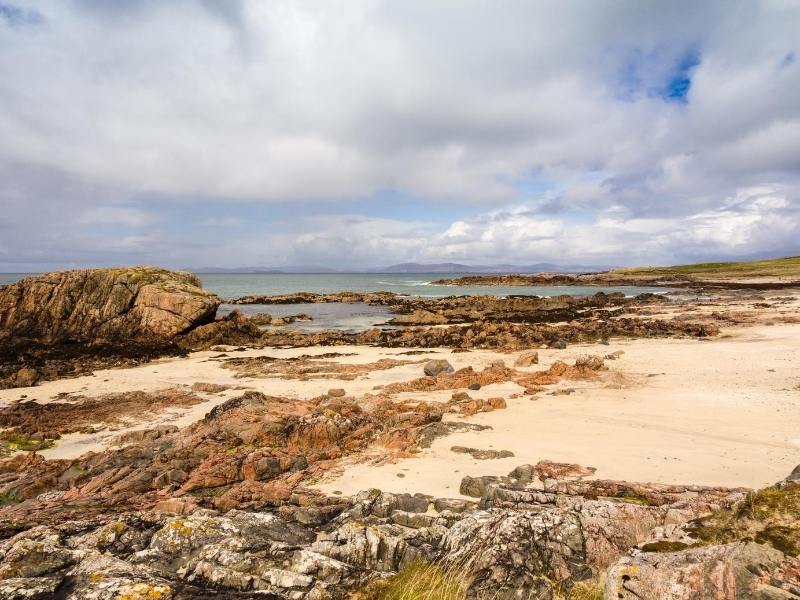
Tiree
Some have described Tiree as a 12-mile-long, 3-mile-wide raised beach. It’s flat, sandy and a lovely place to get away from it all. It’s the westernmost island of the Inner Hebrides and is known for its mild climate and long, sunny summer days.
Later in the year, Tiree becomes a haven for windsurfers from all over the world. It also has a variety of archaeological sites. On the north coast, you can visit Dun Mor Vaul, an iron-age broch, or roundhouse.
You can also explore the Hynish Heritage Trail. Start at the Skerryvore Lighthouse Museum in Hynish and then wind your way through the workshops and walled gardens of the past.
Ideal for
Logistics
How to get there: There’s a ferry from Oban. There are flights from Glasgow.
How to get around: Car, walking or bicycle.
How long to stay: For an overnight getaway, you could combine a trip to Coll and see everything on both islands.
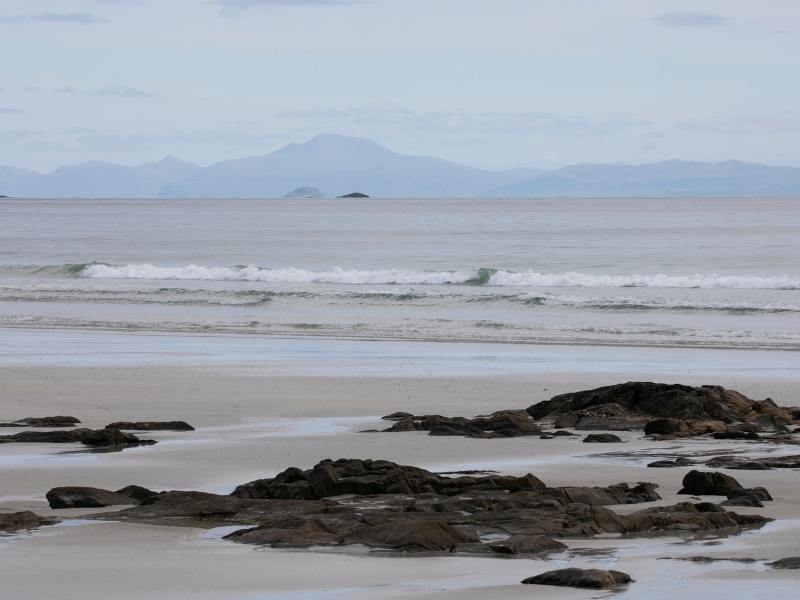
Coll
Coll is a peaceful island known for wildlife, fabulous beaches and star-gazing.
Begin your visit in Arinagour, a little settlement of simple, white-washed cottages. Your next stop could be one its 20 beaches, many that have towering sand dunes and an assortment of seabirds, rabbits and otters.
Inland, if you visit the moors and meadows, keep your eyes peeled—you may see a corncrake, a rare local bird that darts about in the moor’s tall grasses.
In the summer, Coll is home to some of the longest daylight hours in the UK. Conversely, Coll has been deemed Scotland’s only “Dark Sky Community.” Its isolation and lack of light pollution make it an excellent location for star-gazing.
Ideal for
Logistics
How to get there: There’s a ferry from Oban and flights from Glasgow.
How to get around: Car or bicycle.
How long to stay: For an overnight getaway, you could combine a trip to Tiree and see everything on both islands.
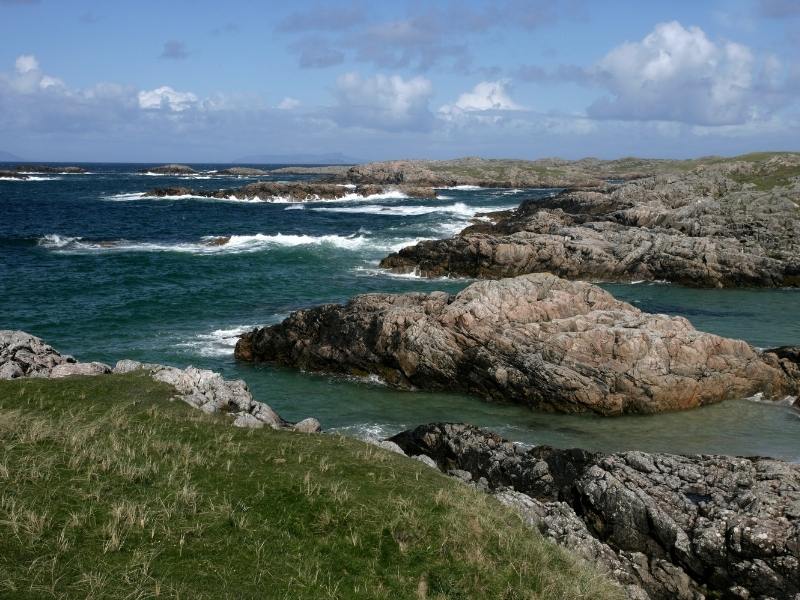
Eigg
You cannot bring your vehicle when visiting Eigg but don’t despair — you won’t miss it. Walking or renting a bike will do just fine and is a perfect way to appreciate this small island’s quiet charm.
Eigg is one of the more wooded islands and is alive with birds like golden eagles, snipes, ringed plovers and gannets. Eigg is also home to An Sgùrr, Britain’s largest pitchstone ridge. Pitchstone is a form of volcanic glass but you’d never know by looking at the imposing geological feature that dominates the island’s southern end.
For those interested in the history of crofting or tenet farming, there is a small museum called Croft 6 on the north part of the island.
Ideal for
Logistics
How to get there: There’s a passenger ferry at Mallaig.
How to get around: Walking, biking or taxi.
How long to stay: Eigg is perfect for a day trip.
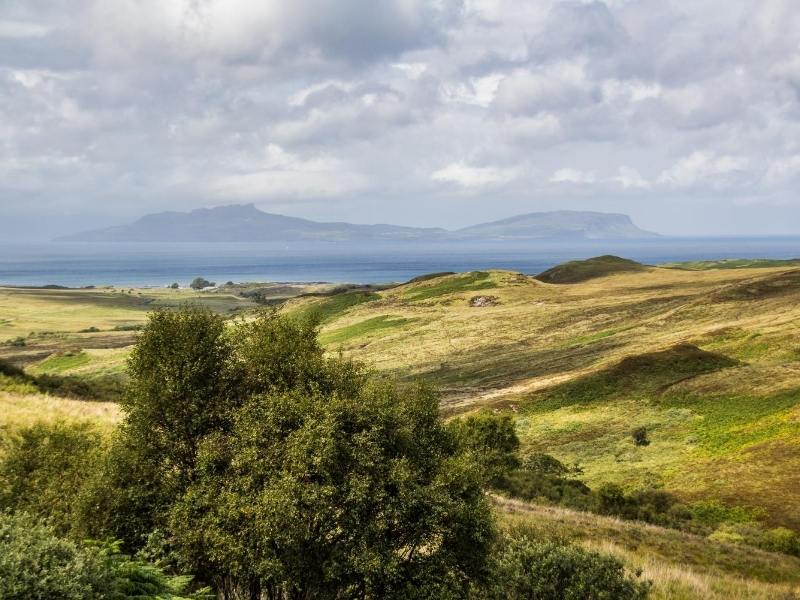
Muck
If you’re looking to explore the smallest of the Small Isles, an archipelago within the Inner Hebrides, look no further than Muck. It’s like a tiny green jewel in a sea of blue and one of the most picturesque Scottish islands.
Your first stop will be the tea room at the pier which is also an information centre and craft shop. Be sure to look for the rugs and hand-knitted clothing made by the locals.
Because Muck is only two miles long and one mile wide, you can easily walk to Gallanach Beach on the island’s north side. If you want a strenuous hike, climb 137 meters to the top of Beinn Airein for a spectacular view of the Small Isles and Scottish mainland. You might even see a puffin or two if you’re lucky.
Ideal for
Logistics
How to get there: There’s a passenger and car ferry from Mallaig. If you bring a car, you’ll need a permit to travel.
How to get around: Walking.
How long to stay: You can explore the entire island in only a few hours.
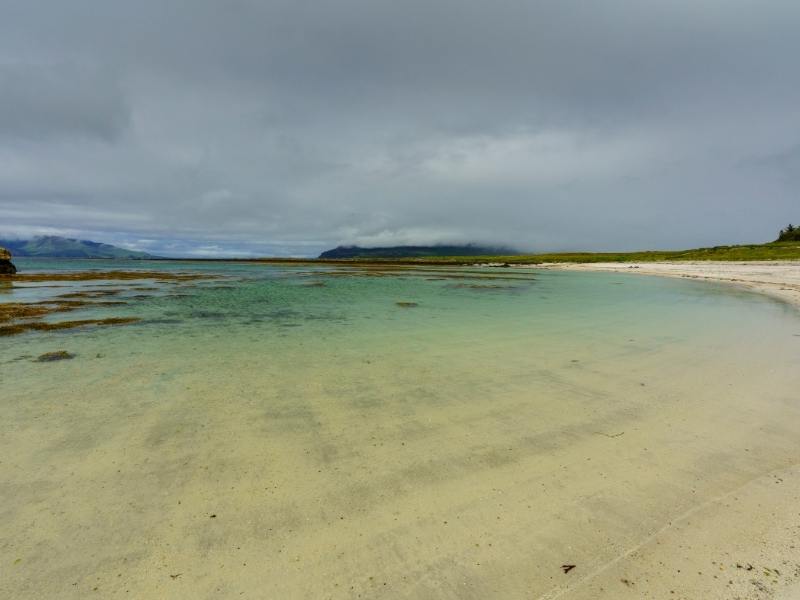
Canna
The tiny island of Canna is owned by the National Trust and is known for its seabirds, flowering plants and its Gaelic archive.
Canna is also one of the most tranquil places in Scotland. Spend the day walking up and down its beaches enjoying a quiet breeze.
If it’s bird breeding season, bring those binoculars — Canna’s coastline is home to over 20,000 birds including puffins and eagles. There’s also a fascinating assortment of archaeological sites ranging from the prehistoric to early 19th century.
Ideal for
Logistics
How to get there: Ferry from Mallaig.
How to get around: Walking.
How long to stay: Canna is perfect for a day trip.
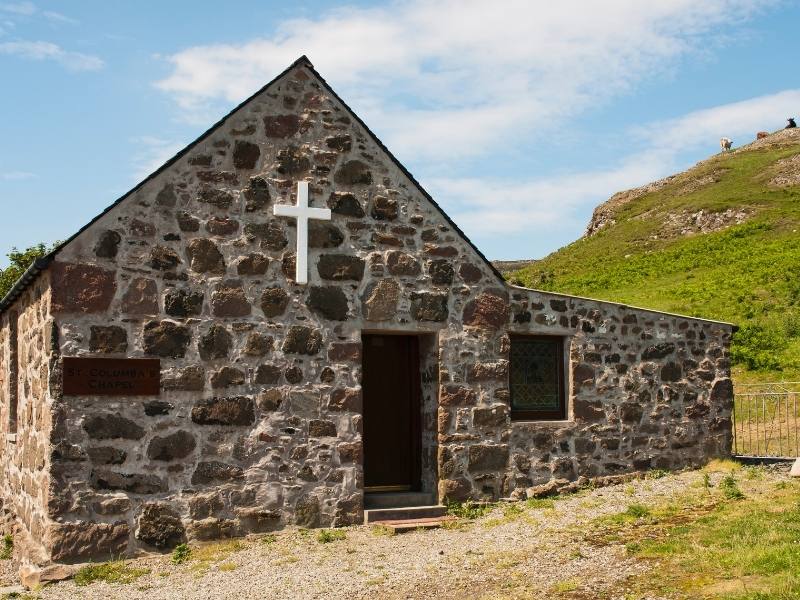
Outer Hebrides
Lewis
Lewis is the third largest island in the Outer Hebrides. It shares a landmass with Harris, which makes up the southern third.
Lewis’s main town, Stornoway, has about 7,000 residents, about 60% of which speak Gaelic. It’s a charming place with a surprising variety of restaurants.
If you travel into the countryside, you’ll find fabulous, rocky coasts and sheltered beaches.
Don’t miss the highly atmospheric Callanish — mysterious standing stones even older than Stonehenge. Dun Carloway is an amazingly well-preserved broch from the iron age that overlooks a dramatic crashing sea.
Also, if you’re planning to spend the night in Lewis, you can stay in Gearrannan in a traditional Scottish blackhouse that’s been updated to meet the needs of a modern traveller.
Ideal for
Logistics
How to get there: There are ferries from Ullapool to Stornoway. There’s also a ferry from Skye into Tarbert in Harris and from there you can drive to Lewis. There are flights from Glasgow, Edinburgh, Inverness and Benbecula.
How to get around: Car, car rental or bus.
How long to stay: You could easily spend several days exploring both Lewis and Harris.
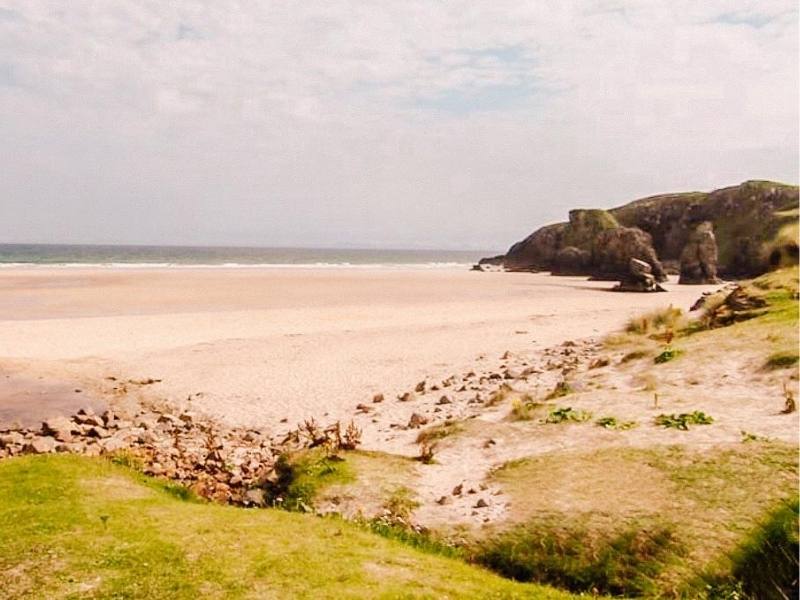
Harris
While visiting Lewis, don’t forget about Harris — its more rugged southern counterpart. It’s got everything you could want in a Scottish Island experience — moors, lochs, castles and dramatic scenery galore.
On its eastern side, rocks have been found that are millions of years old. On the western side, there are beaches with water so blue and sand so sugary white they would put the Caribbean to shame.
It’s no wonder that Harris frequently tops the list of places with the best beaches in the world. Harris also has picture-perfect villages and of course is the home of Harris Tweed, some of the finest textiles in the world.
Tarbert, the quaint main town, has a population of 550 people and makes an ideal base for exploring.
Ideal for
Logistics
How to get there: (See how to get to Lewis.)
How to get around Car.
How long to stay: You could easily spend several days exploring both Lewis and Harris.
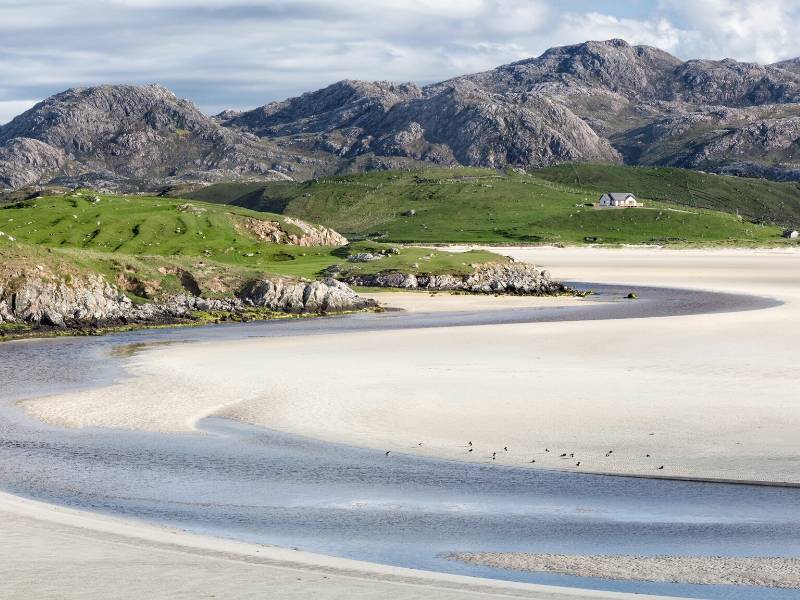
North Uist
Imagine a landscape covered in peat bogs, lochans—small lakes—and machair—flowering grass—alongside stunningly beautiful beaches. That would be North Uist.
Lochmaddy, formerly a herring fishing port, is the main settlement on the island’s west coast. While you’re there, check out Taigh Chearsabhagh, an arts centre and museum that has a gift shop and café.
If you like creepy burial chambers and archaeology, you’re in luck. Barpa Langais, a burial chamber that dates back 5,000 years. For something less ominous, Traigh lar is a dazzling beach with wind-sculpted sand dunes next to crystal clear turquoise water on the island’s west side.
Ideal for
Logistics
How to get there: There are flights from Glasgow and from Lewis. There is a ferry from Skye as well as one from Berneray to Harris.
How to get around: Car, limited taxi service and bicycle.
How long to stay: Ideal for a day trip, especially if you’re staying in Harris.
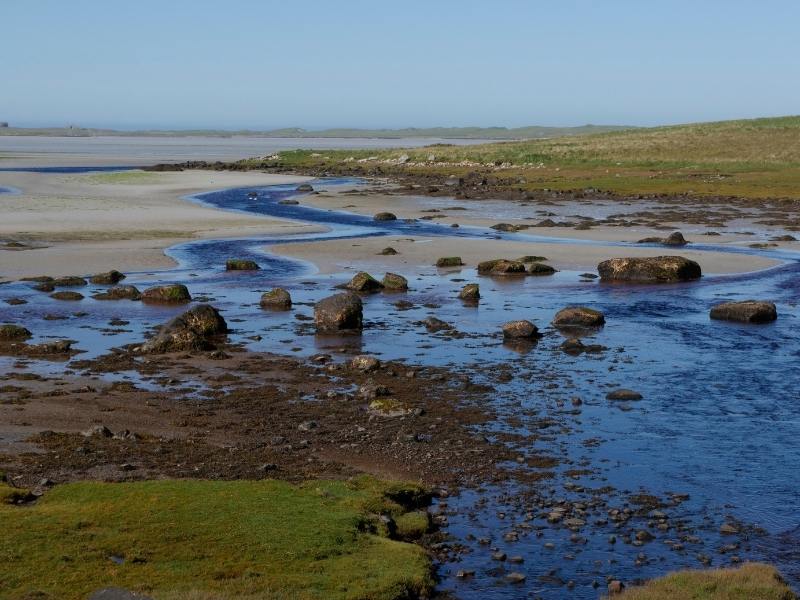
South Uist
Just a short drive from North Uist, South Uist has similar geography to its northern counterpart, with machair, lochen and boggy, sodden hills. South Uist does have a more foreboding feeling, however, probably because its sparse scenery feels slightly forlorn.
The main settlement is Lochboisedale, where you can catch a wildlife cruise. The eastern side of South Uist is mountainous and great for hiking. The western side has lovely, white-sand beaches.
Loch Druidibeg is a must-do for naturalists and is home to a wide variety of plants and birds. If you’d like to play a round of golf, try Askermish Golf Club. Designed by Old Tom Morris in 1891, it was recently restored to its current grandeur.
Ideal for
Logistics
How to get there: There are flights from Glasgow and seasonal ferries from Lochboisedale to the mainland at Malliag. Many people arrive via North Uist and drive to South Uist.
How to get around: Car and limited bus service.
How long to stay: Like North Uist, it’s a perfect place for a day trip.
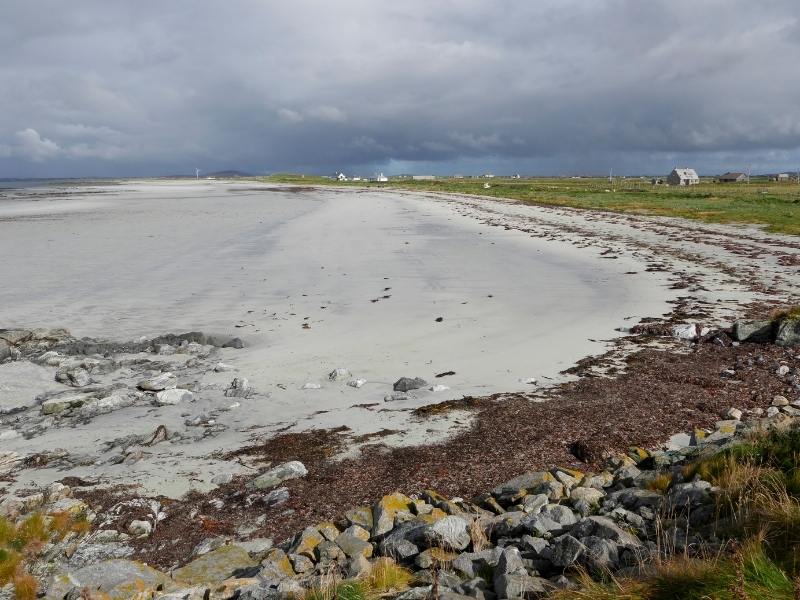
Barra
One of the coolest things about the small island of Barra is that flights can’t arrive at high tide because the runway is underwater.
Only 10 miles long and six miles wide, Barra has a one lane road that loops around the island. Castlebay is the main settlement, and out in the water you’ll immediately be charmed by Kisimul Castle.
You’ll need to take a five-minute boat ride to visit this medieval “Castle in the Sea.” It looks like something out of a fairytale and is the ancient seat of the Clan MacNeil.
When you return ashore, stop in to Dualchas or the Barra Heritage Centre on Castlebay’s western end to learn about local life and history of the island.
Ideal for
Logistics
How to get there: There are daily flights from Glasgow and ferries from the mainland at Oban.
How to get around: Car, rental car, bicycle, bus or taxi.
How long to stay: Barra is perfect for a day trip.
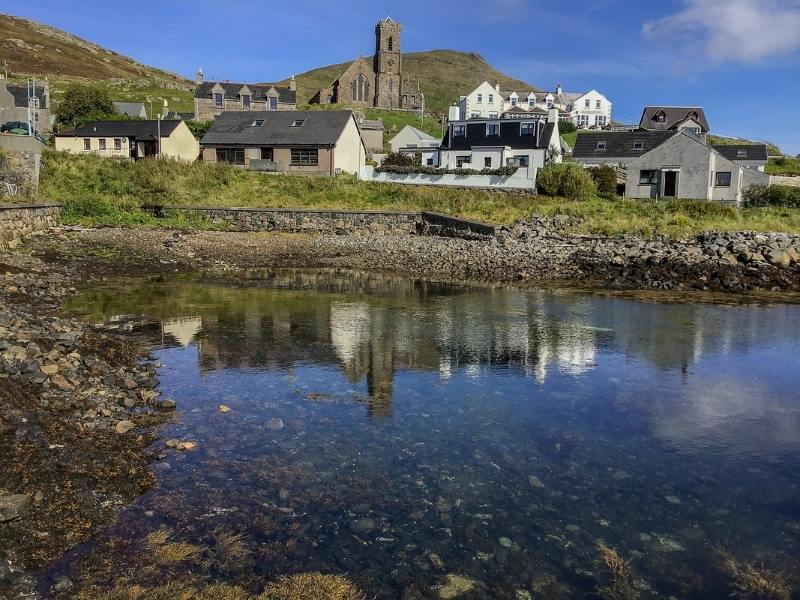
Which of these best Scottish islands will feature in your Scotland itinerary?
With so many beautiful islands (and many other amazing places to visit) you really are spoilt for choice in Scotland!
Read my other Scotland Travel Guides
- Edinburgh Travel Guide
- Inverness Travel Guide
- Scottish Highlands Travel Guide
- Inverness Travel Guide
- Fort William Travel Guide
If you are wondering about where to stay when you visit the islands my Scotland accommodation guide has you covered! And if spending the night in a Scottish castle is something you dream of click here for our selection of the best Scottish castle hotel stays.
For practical advice to help plan your travels in Scotland you will find everything you need to know in my Scotland Travel Guide or in my general UK Travel Planning Guide – a cheat sheet that will answer all your questions!
Read – Best UK Tours 2022/3, our 14day Scotland road trip itinerary or our 14 days best of Britain by rail for more itinerary suggestions!
And if you still have questions why not join my UK and London travel planning group on Facebook!
Join my UK and London travel planning group on Facebook for more tips, inspiration and help from other travelers planning future travel to London and the UK.

